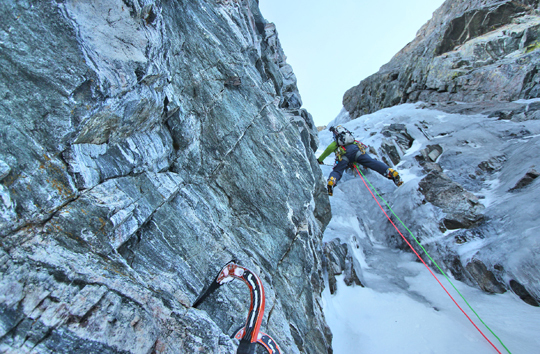
Tanner Callender, Chris Guyer and Aaron Mulkey ticked a new mixed route in the Beartooth Mountains of Montana earlier this month. They climbed 2,000 feet over 13 pitches, finding “some of the best alpine ice climbing I have ever done in the Beartooths,” Mulkey said.
Mulkey has authored more than 100 ice and mixed lines in the South Fork of the Shoshone Valley and has been called “the patriarch of ice climbing in Cody, Wyoming,” where he has resided since 1999. In the 2010 alone, Mulkey and his partners climbed roughly 25 new routes near Cody, nine in a single day. Only recently has Mulkey sought out unclimbed flows in the Beartooths, an area he’s started visiting early in the season before ice forms in the South Fork. But finding success in the Beartooths, Mulkey says, requires close attention to conditions.
Guyer and Mulkey came across Last Call on an October 17 trail run deep in an undisclosed part of the northern Beartooths, where they had seen formations previously. Despite warm late-autumn temperatures, the pair still found climbable ice. They rested the day after and returned to the area with Callender and a rack on October 19.
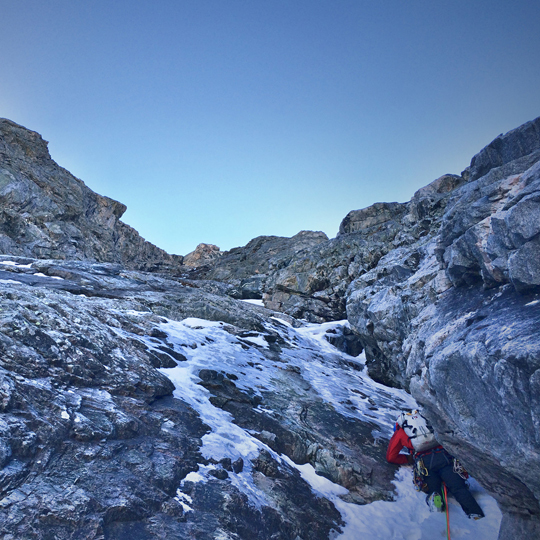
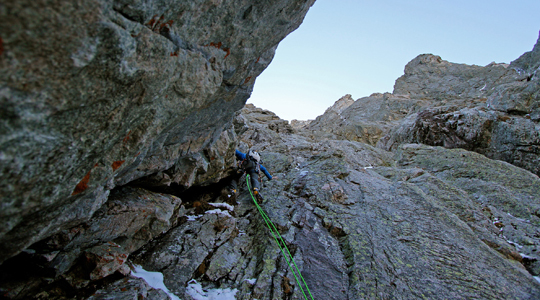
The trio struggled to reach the vein of ice they’d spotted from the ground. They’d about given up when they rediscovered the vein while simulclimbing a rocky ridgeline. Mulkey pitched out the next four rope lengths, including a series of steep ice curtains. Near the top of the face, they came across one of the best pitches of ice on the route, a “book-fold formation” less than shoulders’ width on steep, exposed ice. A 30- to 40-foot crack system finished the route, and at around 8:30 p.m. the team topped out.
The descent took nearly six hours, a long journey after more than 16 hours of hiking and climbing. Darkness made the terrain difficult to read, and they could not find the gully they had originally planned to go down. They bushwhacked instead, and crossed a river to reach their car at 2:00 a.m. “Yeah, it was kind of epic getting off the damn thing,” Mulkey admits.
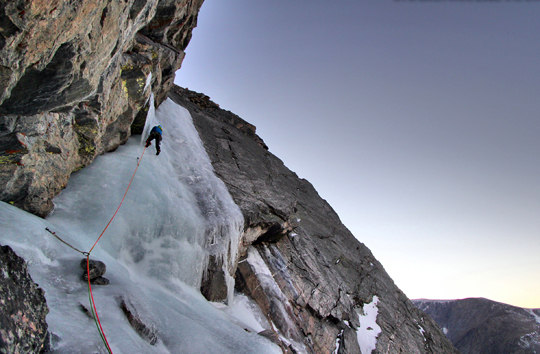

The group named the new route “Last Call,” in reference to their mid-route decision to press on despite waning sunlight. “On the ridge, we knew we only had three hours of daylight left. We must have stood on the ridge for 20 minutes trying to decide whether to go or not,” Mulkey said. “Eventually, we just decided to commit to a lot of suffering.”
Mulkey, who did not grade any of his new routes last year, chose not to attribute a grade to the route. “I think sometimes grades scare people away from even trying to attempt the line,” he said. “I prefer to say it’s a really fun, classic line. Any other place in the country it would be an absolute classic route people would surely chase.”
Mulkey has partnered with Callender and Guyer for seven or eight years, climbing mostly locally with Guyer and traveling as far as Norway with Callender. “I have found it’s not the hard WI6 climbs I’m searching for–it’s the remote places and camaraderie of great partners,” Mulkey said.
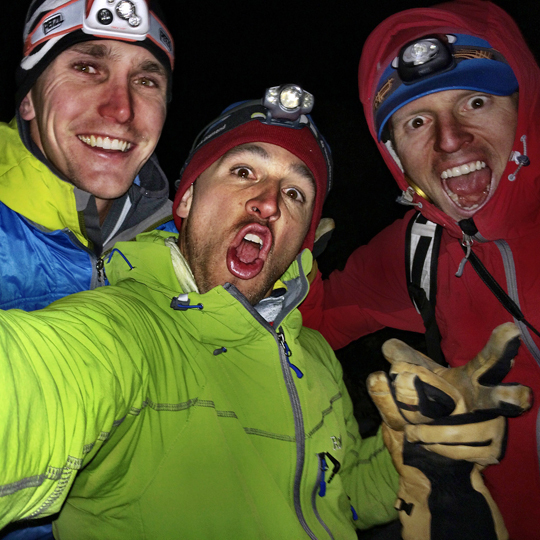
When asked if that held true for Last Call, he said, “Totally. We had a great time. To be able to go and suffer in the mountains for 20-plus hours, you have to do that with a good team that’s also driven and just good friends…The people I climb with now, that’s what it’s all about.”